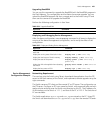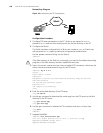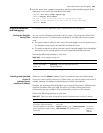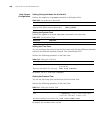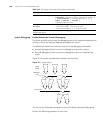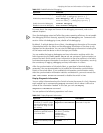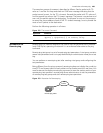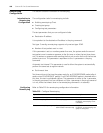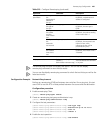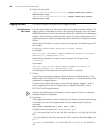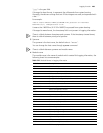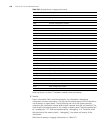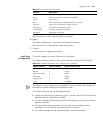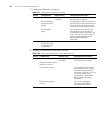
Introduction to Remote-ping 465
The execution process of tracert is described as follows: Send a packet with TTL
value as 1 and the first hop sends back an ICMP error message indicating that the
packet cannot be sent, for the TTL is timeout. Re-send the packet with TTL value as 2
and the second hop returns the TTL timeout message. The process is carried over and
over until the packet reaches the destination. The purpose to carry out the process is
to record the source address of each ICMP TTL timeout message, so as to provide the
route of an IP packet to the destination.
Perform the following operation in all views.
Figure 122 The tracert Command
Introduction to
Remote-ping
Remote-ping is a network diagnostic tool used to test the performance of protocols
(only ICMP by far) operating on network. It is an enhanced alternative to the ping
command.
Remote-ping test group is a set of remote-ping test parameters. A test group contains
several test parameters and is uniquely identified by an administrator name plus a test
tag.
You can perform an remote-ping test after creating a test group and configuring the
test parameters.
Being different from the ping command, remote-ping does not display the round trip
time (RTT) and timeout status of each packet on the console terminal in real time. You
need to execute the display remote-ping command to view the statistic results of your
remote-ping test operation. remote-ping allows administrators to set the parameters
of remote-ping test groups and start remote-ping test operations.
Figure 123 Illustration for Remote-ping
Operation Command
Trace route tracert [ -a source-IP ] [ -f first-TTL ] [ -m max-TTL ] [
-p port ] [ -q nqueries ] [ -w timeout ] string
X.25
Internet
Remote-ping Client
Switch A
Switch B
X.25
Internet
X.25
Internet
Switch A
Switch B



